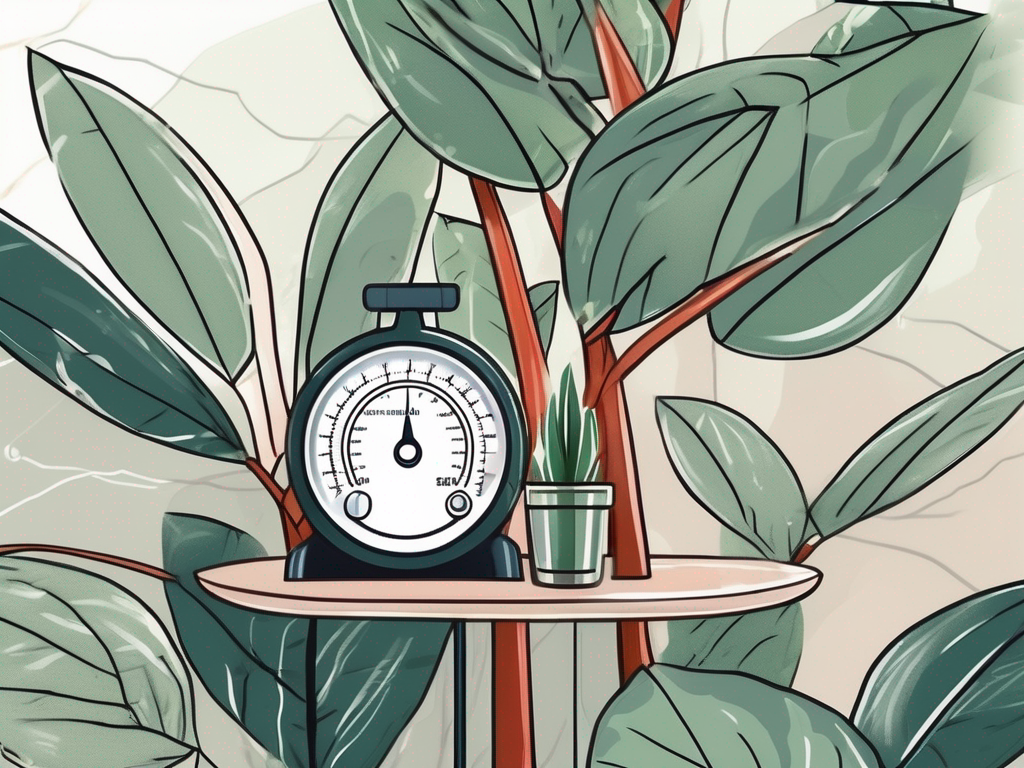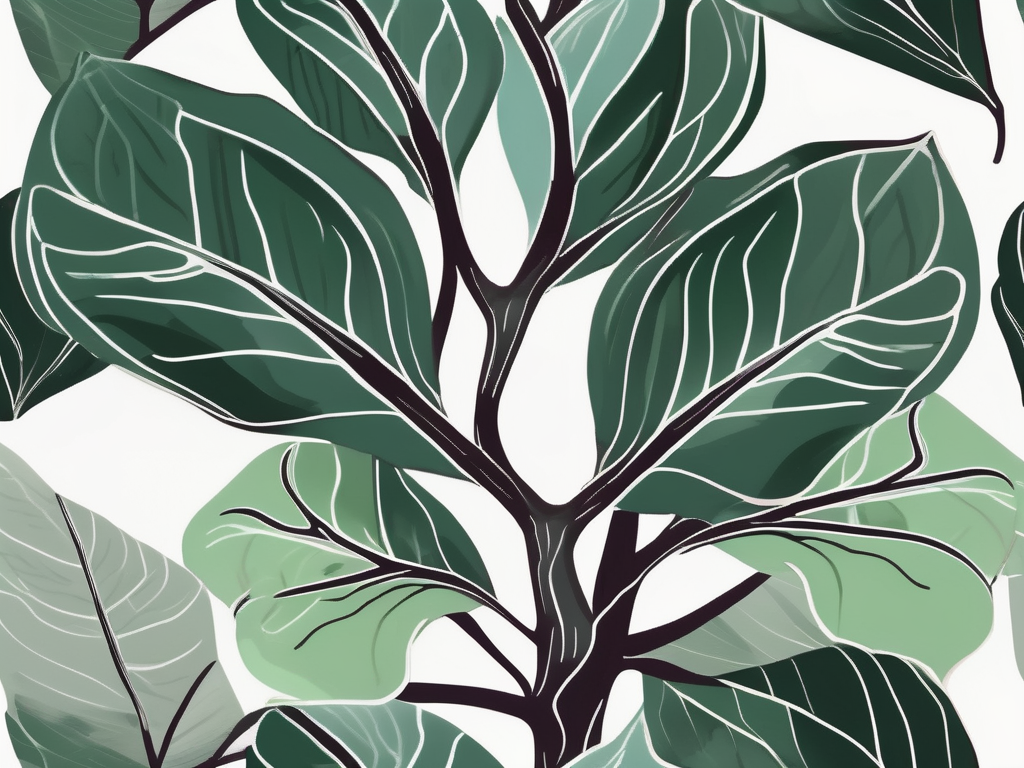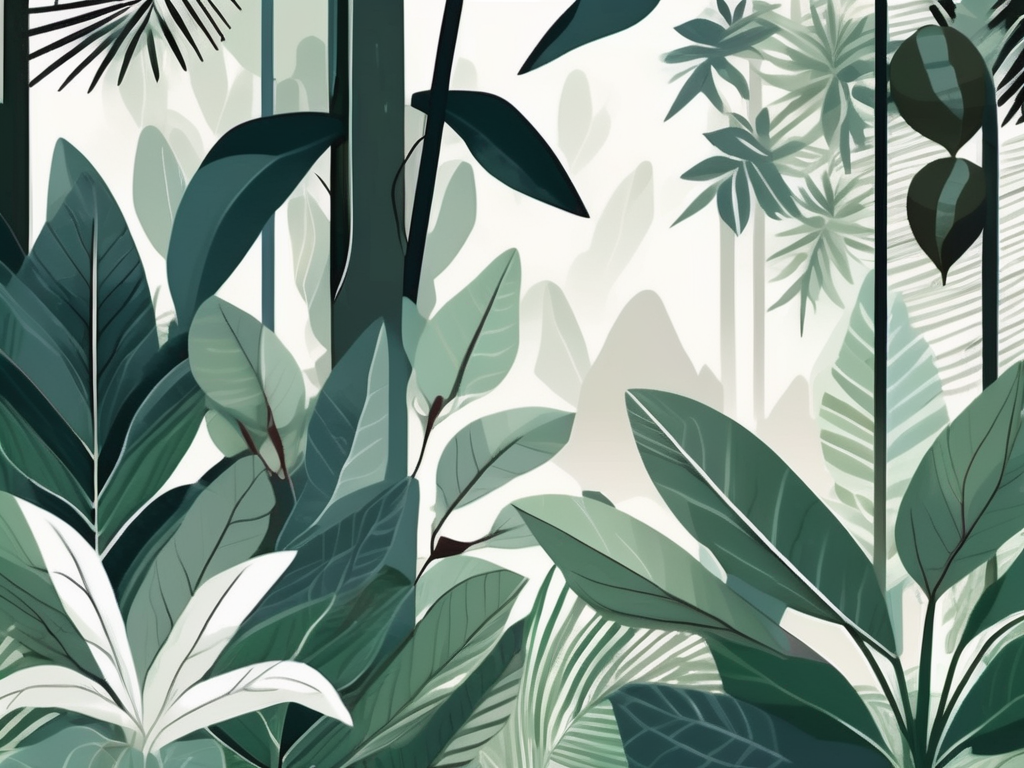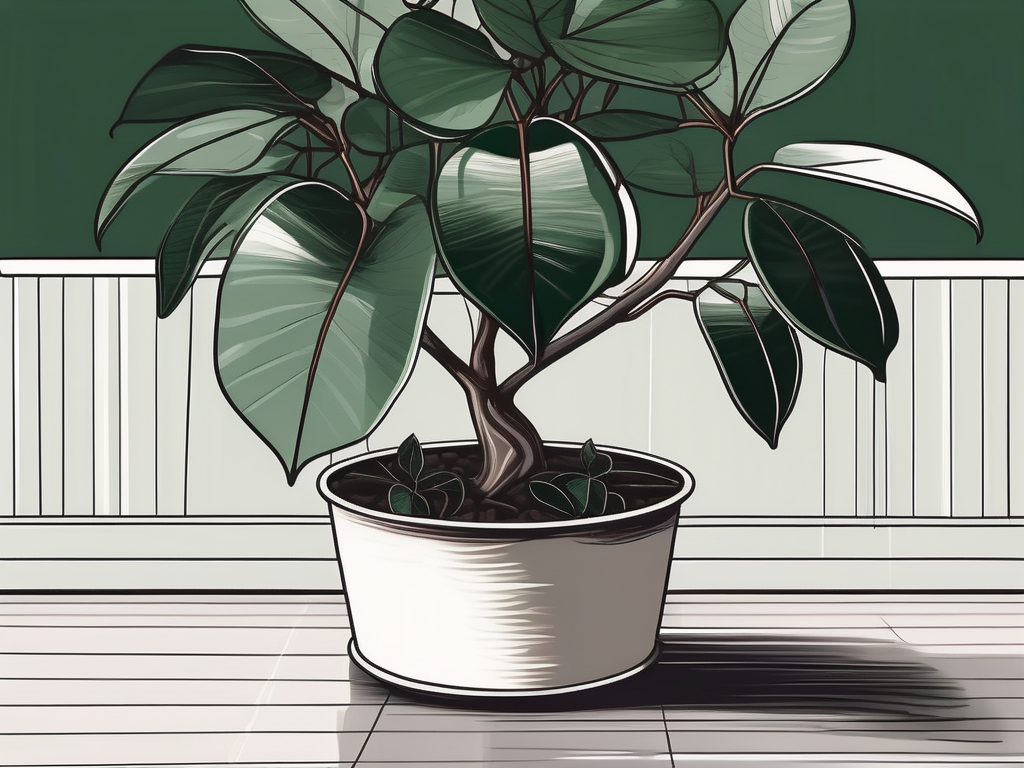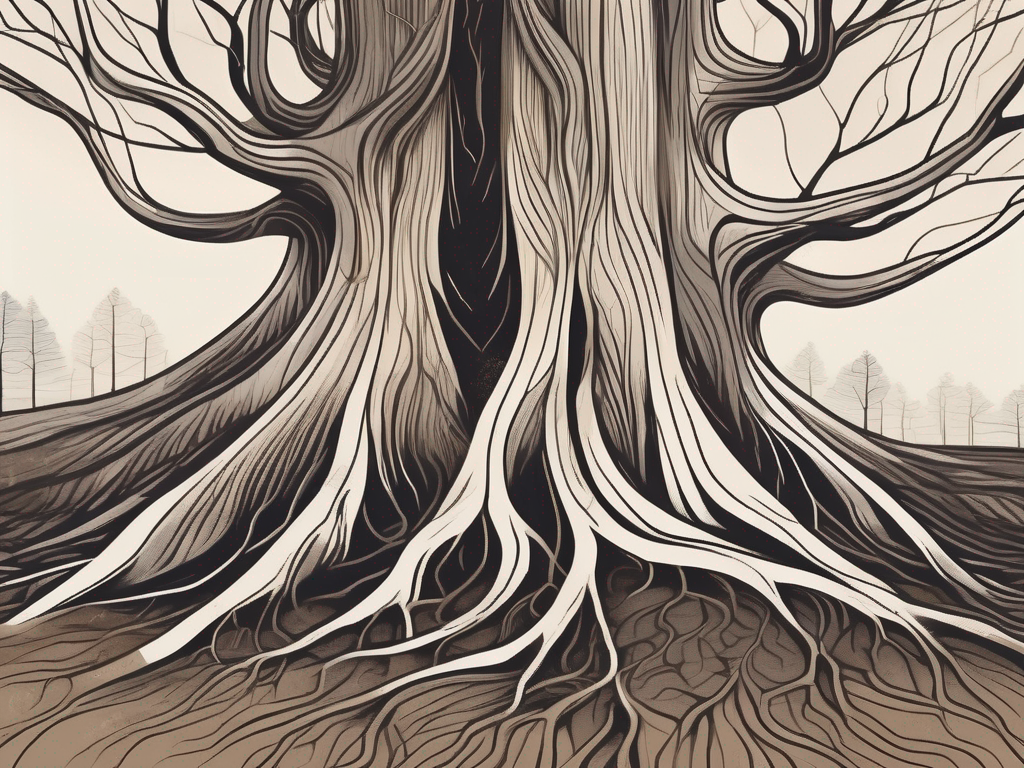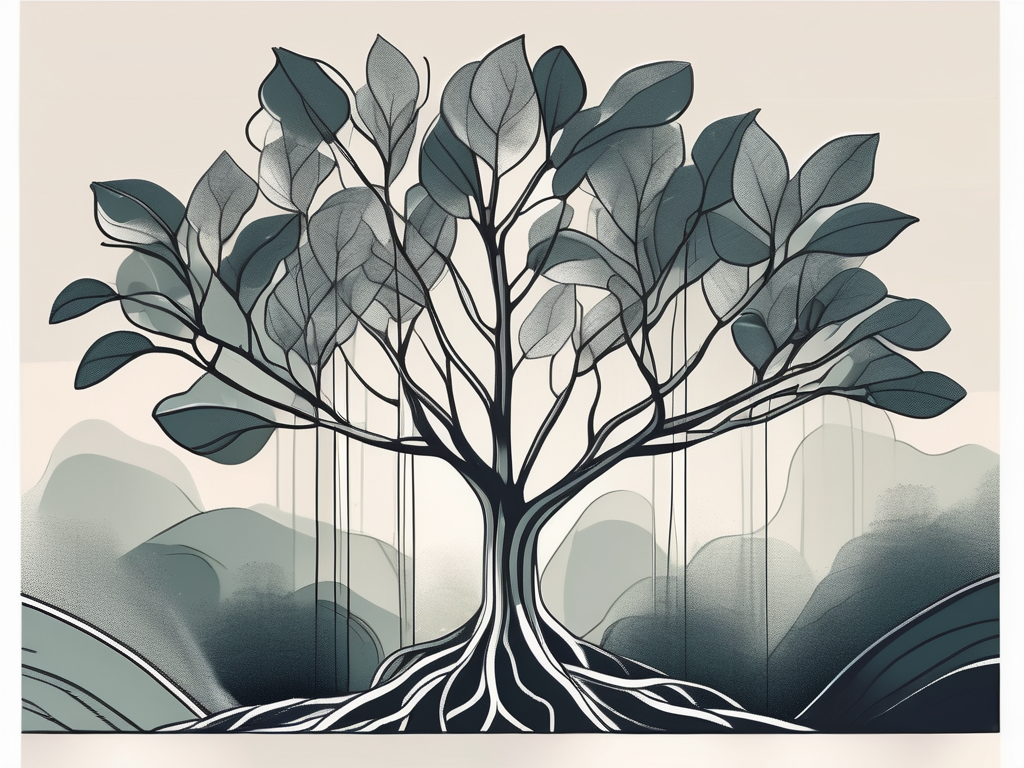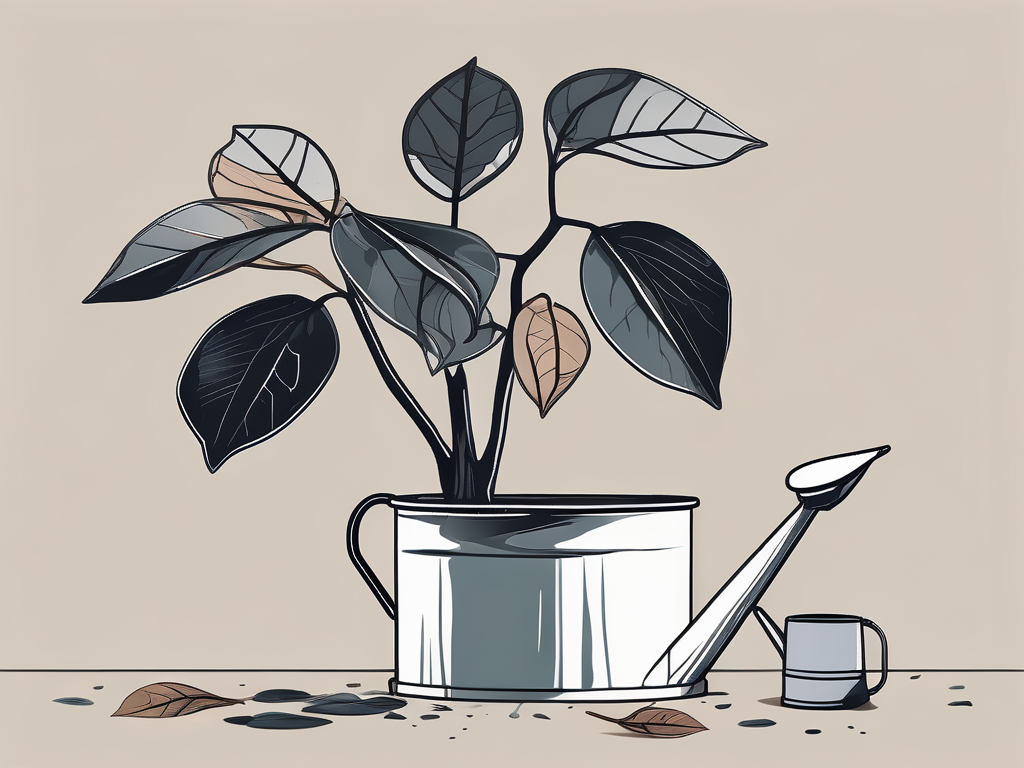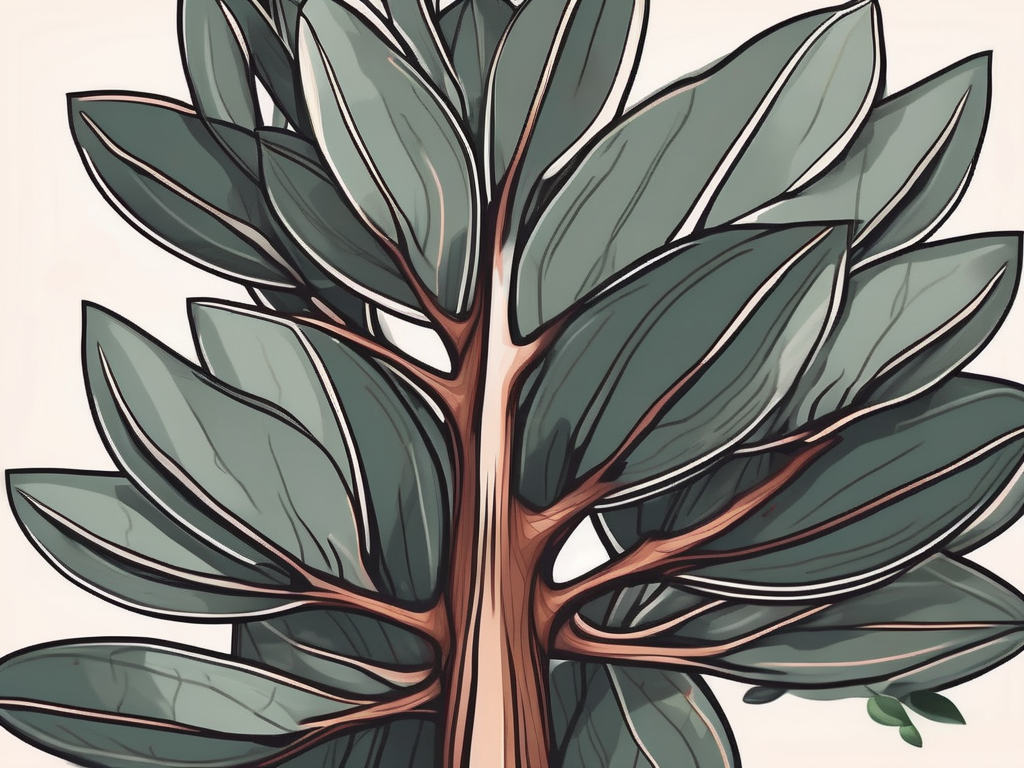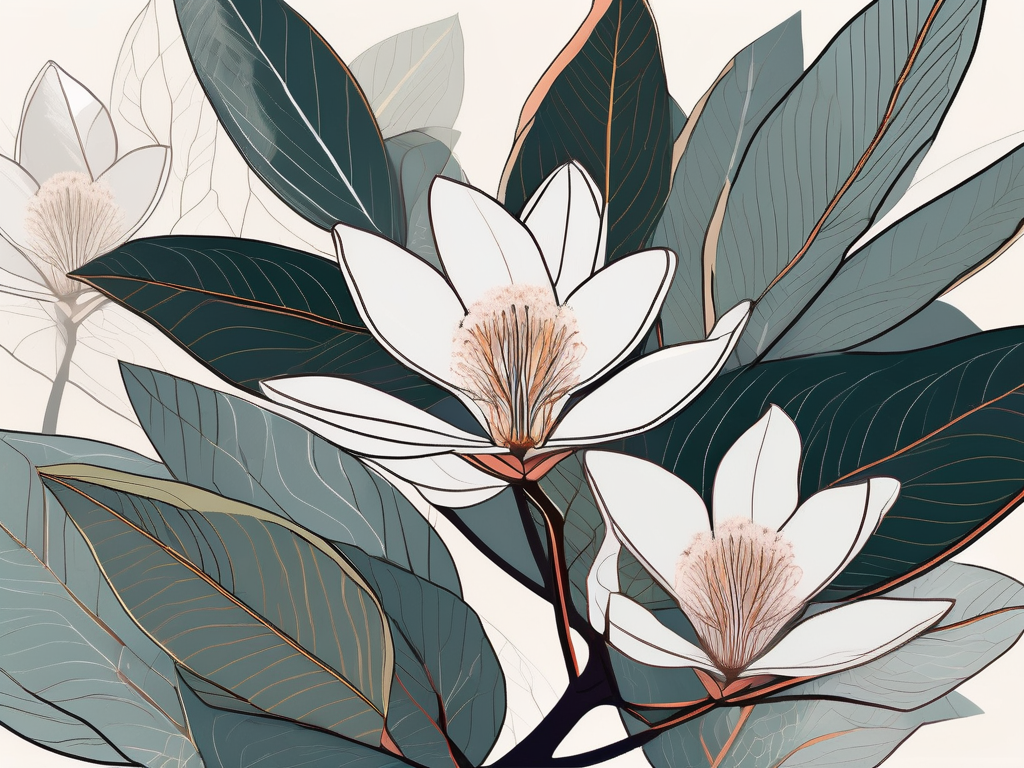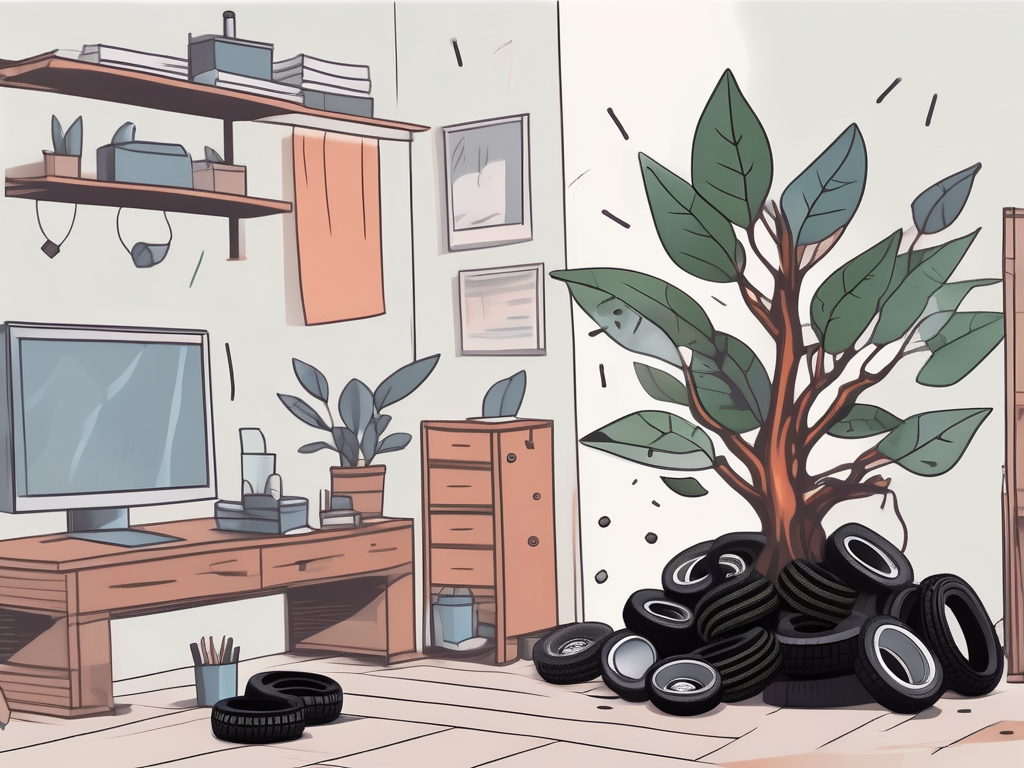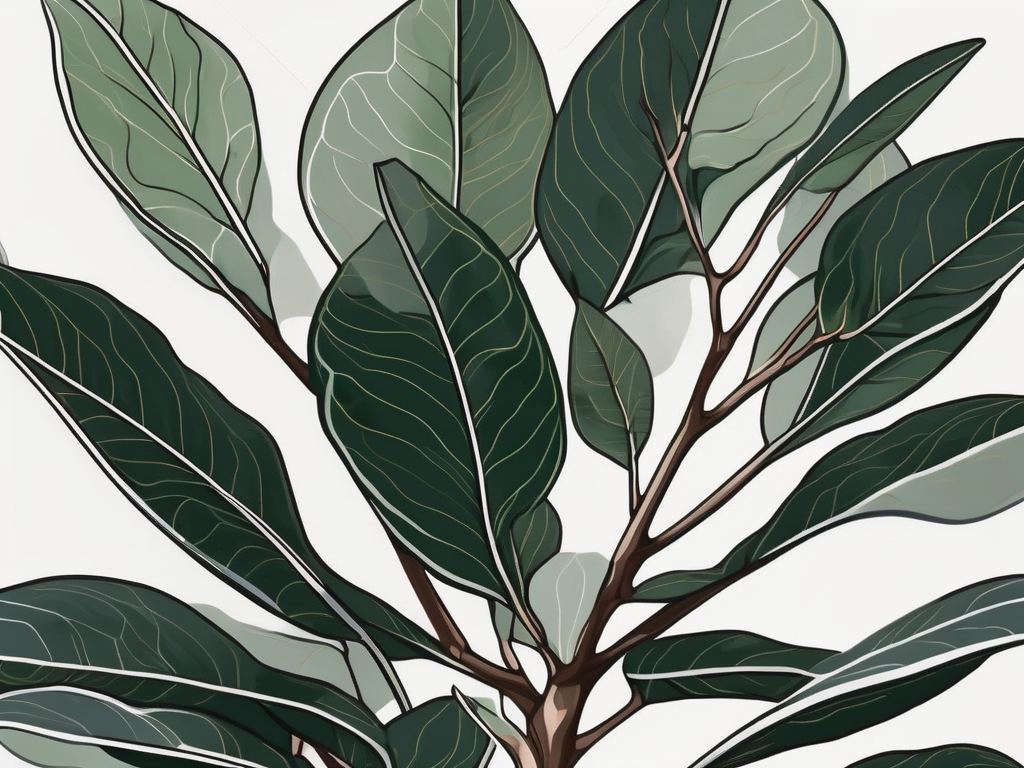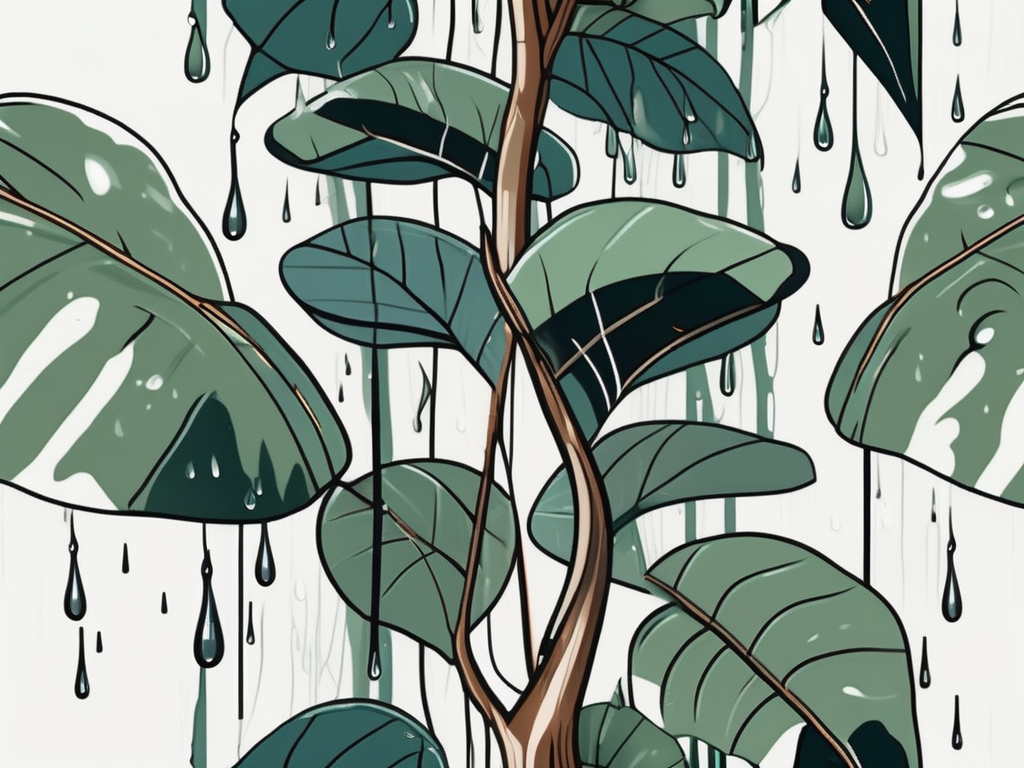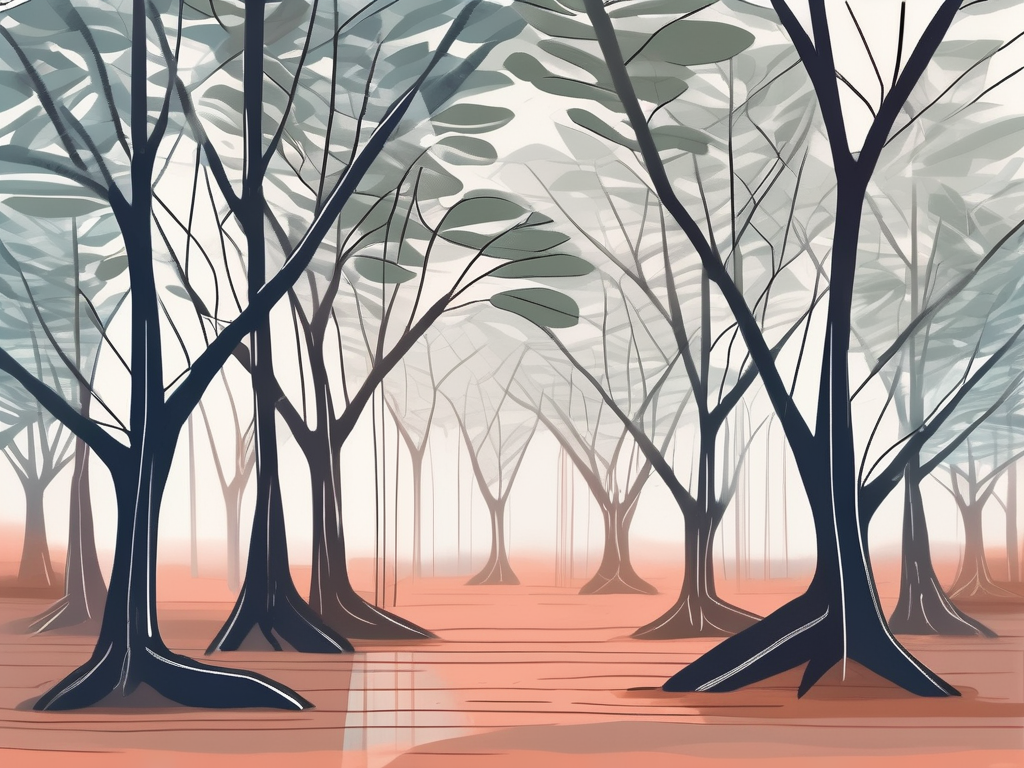
Rubber trees (Ficus elastica) are one of those classic houseplants that have stood the test of time. Known for their large, glossy leaves and striking presence, they can turn any room into a green oasis. But if you want your rubber tree to thrive, understanding its temperature needs is crucial.
In this article, we'll discuss the temperature tolerance of rubber trees, from their ideal conditions to what happens when things get too hot or cold. We'll also share practical tips on how to help your rubber tree adapt to your home's environment. So, grab your favorite cuppa, and let’s explore the world of rubber tree care!
Understanding Rubber Trees' Natural Habitat
Before diving into the nitty-gritty of temperature tolerance, it helps to know where rubber trees naturally come from. Native to the tropical regions of Southeast Asia, these plants are accustomed to warm, humid conditions. Picture a lush rainforest where temperatures rarely drop below 60°F (about 15°C), and humidity levels are quite high. That’s the kind of environment rubber trees are built for.
In their natural habitat, rubber trees can grow to be massive, reaching heights of up to 100 feet. Of course, in your living room, they won't grow nearly as tall, but they do love to spread their leaves. This tropical origin is why they prefer temperatures that are consistently warm, and it gives us some clues about how to keep them happy indoors.
Understanding their natural habitat can offer insights into the kind of care they need in our homes. It's not just about mimicking the temperature, but also considering humidity, light, and even airflow. When you think about it, creating the right environment for your rubber tree is like inviting a guest from a faraway land and making sure they feel at home.
Ideal Temperature Range for Rubber Trees
So, what’s the sweet spot for rubber trees? They thrive in temperatures ranging from 65°F to 85°F (18°C to 29°C). These temperatures mimic the warm, consistent climate of their native habitat. This range allows them to perform all their vital processes, like photosynthesis and respiration, without stress.
When temperatures are within this range, rubber trees can efficiently use the sunlight they receive, converting it into energy and growth. Their leaves will be vibrant and glossy, and you might even notice new leaves unfurling at a steady pace. This is your plant's way of showing it's comfortable and healthy.
Of course, not every home can maintain such a specific temperature range year-round, especially if you live in an area with distinct seasons. The key is to avoid sudden changes in temperature, as rubber trees prefer stability. Think of it as maintaining a cozy, consistent environment for your leafy companion.
The Effects of Cold Temperatures
Rubber trees, like many tropical plants, can be quite sensitive to cold temperatures. If exposed to temperatures below 50°F (10°C) for prolonged periods, they may experience stress. Cold drafts from windows or doors can also have a similar effect, even if the overall room temperature is within the ideal range.
One of the first signs of cold stress is leaf drop. You might notice leaves turning yellow before they fall off. It’s the plant's way of conserving energy when it can’t sustain all its leaves. Another telltale sign is slowed growth, as cooler temperatures can reduce the plant's ability to photosynthesize effectively.
To protect your rubber tree from the cold, keep it away from drafty windows or doors during the winter months. If you have to place it near a window, consider using a curtain or shade to block out the cold air. You can also add a layer of insulation to pots if you live in an especially chilly area. The goal is to maintain a stable temperature, avoiding those sudden cold shocks that can send your rubber tree into a tailspin.
Handling Hot Temperatures and Sun Exposure
While rubber trees love warmth, excessive heat can be just as problematic as the cold. Temperatures above 85°F (29°C) can cause stress, especially if accompanied by intense sunlight. In such conditions, the plant might struggle to retain moisture, leading to scorched leaves.
High temperatures often coincide with low humidity, which isn’t ideal for a tropical plant like the rubber tree. You might notice the edges of the leaves browning or curling, a sign that the plant is losing moisture faster than it can absorb it. This can also lead to a condition called leaf tip burn, where the tips of the leaves dry out and turn brown.
To keep your rubber tree comfortable during hot spells, ensure it’s not placed directly under the sun's rays. Indirect, bright light is perfect. You can also increase humidity around the plant by placing a tray of water nearby or misting the leaves regularly. If you notice the room getting particularly hot, a fan can help circulate the air, preventing heat buildup.
Tips for Adjusting Indoor Temperature
Now that we know what temperatures rubber trees prefer, how do we make sure our homes provide that environment? It’s a balancing act, especially if you live in a place with seasonal changes. Here are a few tips to help you adjust your indoor temperature:
- Placement: Position your rubber tree away from heat sources like radiators or heaters, as well as direct drafts from windows or doors.
- Humidity: Use a humidifier to maintain a humidity level of around 40-50%. Rubber trees love a bit of moisture in the air.
- Monitoring: Use a thermometer to keep an eye on the room temperature. This way, you can quickly adjust if it starts to stray from the ideal range.
- Seasonal Changes: In winter, consider moving your plant to a slightly warmer spot if your usual location gets too chilly.
Creating a stable environment isn’t just about temperature; it’s about the overall atmosphere. Consider the light, humidity, and even the airflow in your space. It all contributes to how happy and healthy your rubber tree will be.
Signs Your Rubber Tree is Uncomfortable
Your rubber tree can't speak, but it sure can show you when something’s not right. Here are some signs that your plant might be struggling with temperature issues:
- Leaf Drop: If leaves start dropping, it might be too cold or too drafty. Check the surrounding environment.
- Yellowing Leaves: Often a precursor to leaf drop, yellowing can indicate both cold and heat stress.
- Brown Leaf Tips: This could mean the air is too dry or the plant is too hot.
- Stunted Growth: If your rubber tree isn't growing as expected, it might not be in its ideal temperature range.
Paying attention to these signs can help you make necessary adjustments. Remember, a happy rubber tree will show vibrant leaves and steady growth.
Adapting Rubber Trees to Seasonal Changes
Just like us, plants can feel the impact of changing seasons. As temperatures fluctuate, it's important to help your rubber tree adapt. During the cooler months, when heating is on, the air can become dry. It's a good idea to increase humidity around your plant.
In the summer, when temperatures rise, make sure your plant isn't getting too much direct sunlight, as this can lead to heat stress. Move it to a spot with indirect light if needed. Fans can help keep air circulating, preventing heat from building up around the plant.
Consider the seasonal lighting changes too. As the days get shorter in winter, your rubber tree might benefit from supplemental lighting. A grow light can help maintain its growth cycle during those darker months.
Being proactive about seasonal changes can be the difference between a thriving rubber tree and one that’s just surviving. It’s all about anticipating changes and making adjustments to keep your plant comfortable year-round.
Creating a Rubber Tree-Friendly Environment
Besides temperature, there are other factors that contribute to the well-being of your rubber tree. Light, humidity, and even the type of pot you use can make a big difference. Here are a few tips to create a welcoming environment:
- Light: Rubber trees love bright, indirect light. Too much direct sunlight can scorch the leaves, while too little can stunt growth.
- Humidity: Aim for moderate humidity. You can achieve this with a humidifier or by grouping plants together to create a microclimate.
- Pot and Soil: Use a well-draining soil mix and a pot with drainage holes. Rubber trees don’t like sitting in water, which can lead to root rot.
Creating the right environment takes a bit of effort, but it’s worth it when you see your rubber tree flourishing. It’s all about understanding what makes these plants tick and providing those conditions as best as you can.
Common Mistakes to Avoid
Even the most experienced plant parents can make mistakes. Here are some common pitfalls to avoid when it comes to rubber tree care:
- Overwatering: Rubber trees prefer to dry out slightly between waterings. Overwatering can lead to root rot.
- Ignoring Temperature Changes: Sudden changes in temperature can stress your plant. Be mindful of where you place it, especially during seasonal shifts.
- Too Much Direct Sunlight: While they love light, too much direct sun can damage the leaves.
By avoiding these mistakes, you’ll set your rubber tree up for success. Remember, plant care is a learning experience, and every plant is a little different.
Final Thoughts
Understanding the temperature needs of your rubber tree is key to keeping it healthy and thriving. By providing the right environment, you ensure your plant can grow strong and vibrant, adding beauty to your home.
At Cafe Planta, we're passionate about helping plant lovers create beautiful, thriving spaces. If you have any questions about plant care, feel free to email us or reach out on Instagram. Whether you're just starting out or looking to expand your collection, we're here to share our love of plants and support your journey.













